-
EXECUTIVE SUMMARY
-
MARKET INTRODUCTION
-
2.1.
-
Market Definition
-
Scope of the Study
- Research Objectives
- Assumptions & Limitations
-
Market Structure
-
MARKET
-
RESEARCH METHODOLOGY
-
Research Process
-
Secondary Research
-
Primary Research
-
Forecast Model
-
MARKET LANDSCAPE
-
4.1.
-
Supply Chain Analysis
-
4.2.
-
Porter’s Five Forces Analysis
-
4.2.2.
-
Bargaining Power of Buyers
-
4.2.4.
-
Threat of Substitutes
-
Outbreak on Global Face Shield Market
-
4.3.2.
-
Impact on Consumer Buying Behavior
-
4.3.4.
-
Impact on Store-Based vs Online Sales
-
Raw Material Suppliers
-
Manufacturers/Producers
-
Distributors/Retailers/Wholesalers/E-Commerce
-
End Uses
-
Threat of New Entrants
-
Bargaining Power of Suppliers
-
Intensity of Rivalry
-
Impact of Covid-19
- Impact on Production
- Impact on Supply Chain
- Others
-
MARKET DYNAMICS
-
OF THE GLOBAL FACE SHIELD MARKET
-
Introduction
-
Drivers
-
5.3.
-
Restraints
-
Opportunities
-
Challenges
-
GLOBAL FACE SHIELD
-
MARKET, BY MATERIAL TYPE
-
Introduction
-
Polycarbonate
- Market Estimates &
-
6.2.1.
-
Market Estimates & Forecast, 2023–2032
-
Forecast, by Region, 2023–2032
-
Cellulose Acetate
- Market
- Market Estimates & Forecast,
-
Estimates & Forecast, 2023–2032
-
by Region, 2023–2032
-
GLOBAL FACE SHIELD MARKET, BY END USE
-
7.1.
-
Introduction
-
Individual
- Market Estimates & Forecast, 2023–2032
- Market Estimates & Forecast, by Region, 2023–2032
-
Professional
- Market Estimates & Forecast, 2023–2032
- Market Estimates
-
& Forecast, by Region, 2023–2032
-
7.3.2.1.1.
-
Market Estimates & Forecast, 2023–2032
-
& Forecast, by Region, 2023–2032
-
7.3.2.2.1.
-
Market Estimates & Forecast, 2023–2032
-
& Forecast, by Region, 2023–2032
-
7.3.2.3.1.
-
Market Estimates & Forecast, 2023–2032
-
& Forecast, by Region, 2023–2032
-
7.3.2.4.1.
-
Market Estimates & Forecast, 2023–2032
-
& Forecast, by Region, 2023–2032
-
GLOBAL FACE SHIELD MARKET, BY
-
DISTRIBUTION CHANNEL
-
Introduction
-
Store-Based
- Market
- Market Estimates & Forecast,
-
Estimates & Forecast, 2023–2032
-
by Region, 2023–2032
-
Non-Store-Based
- Market Estimates
- Market Estimates & Forecast, by
-
& Forecast, 2023–2032
-
Region, 2023–2032
-
GLOBAL FACE SHIELD MARKET, BY REGION
-
Introduction
-
North America
- Market Estimates & Forecast, 2023–2032
- Market Estimates & Forecast, by Material Type, 2023–2032
-
9.2.3.
-
Market Estimates & Forecast, by End Use, 2023–2032
-
Estimates & Forecast, by Distribution Channel, 2023–2032
-
Estimates & Forecast, by Country, 2023–2032
-
9.2.6.1.
-
Market
-
Market
-
US
-
Market Estimates & Forecast, by Material Type, 2023–2032
-
9.2.6.2.
-
Market Estimates & Forecast, by End Use, 2023–2032
-
Estimates & Forecast, by Distribution Channel, 2023–2032
-
9.2.7.3.
-
Market
-
Canada
-
Market Estimates & Forecast, by Material Type, 2023–2032
-
Market Estimates & Forecast, by End Use, 2023–2032
-
Market Estimates & Forecast, by Distribution Channel, 2023–2032
-
9.2.8.
-
Mexico
-
9.2.8.3.
-
Market Estimates & Forecast, by Material Type, 2023–2032
-
Market Estimates & Forecast, by End Use, 2023–2032
-
Market Estimates & Forecast, by Distribution Channel, 2023–2032
-
9.3.
-
Europe
-
9.3.2.
-
Market Estimates & Forecast, 2023–2032
-
Market Estimates & Forecast, by Material Type, 2023–2032
-
Estimates & Forecast, by End Use, 2023–2032
-
& Forecast, by Distribution Channel, 2023–2032
-
& Forecast, by Country, 2023–2032
-
Estimates & Forecast, by Material Type, 2023–2032
-
Estimates & Forecast, by End Use, 2023–2032
-
& Forecast, by Distribution Channel, 2023–2032
-
9.3.7.1.
-
Market
-
Market Estimates
-
Market Estimates
-
Germany
-
Market
-
Market
-
Market Estimates
-
UK
-
Market Estimates & Forecast, by Material Type, 2023–2032
-
9.3.7.2.
-
Market Estimates & Forecast, by End Use, 2023–2032
-
Estimates & Forecast, by Distribution Channel, 2023–2032
-
9.3.8.3.
-
Market
-
France
-
Market Estimates & Forecast, by Material Type, 2023–2032
-
Market Estimates & Forecast, by End Use, 2023–2032
-
Market Estimates & Forecast, by Distribution Channel, 2023–2032
-
9.3.9.
-
Spain
-
9.3.9.3.
-
Market Estimates & Forecast, by Material Type, 2023–2032
-
Market Estimates & Forecast, by End Use, 2023–2032
-
Market Estimates & Forecast, by Distribution Channel, 2023–2032
-
9.3.10.
-
Italy
-
9.3.10.3.
-
Market Estimates & Forecast, by Material Type, 2023–2032
-
Market Estimates & Forecast, by End Use, 2023–2032
-
Market Estimates & Forecast, by Distribution Channel, 2023–2032
-
9.3.11.
-
Rest of Europe
-
9.4.3.
-
Market Estimates & Forecast, by Material Type,
-
Market Estimates & Forecast, by End Use, 2023–2032
-
Market Estimates & Forecast, by Distribution Channel, 2023–2032
-
Asia-Pacific
- Market Estimates & Forecast, 2023–2032
- Market Estimates & Forecast, by Material Type, 2023–2032
-
Market Estimates & Forecast, by End Use, 2023–2032
-
Estimates & Forecast, by Distribution Channel, 2023–2032
-
Estimates & Forecast, by Country, 2023–2032
-
9.4.6.1.
-
Market
-
Market
-
China
-
Market Estimates & Forecast, by Material Type, 2023–2032
-
9.4.6.2.
-
Market Estimates & Forecast, by End Use, 2023–2032
-
Estimates & Forecast, by Distribution Channel, 2023–2032
-
9.4.7.3.
-
Market
-
Japan
-
Market Estimates & Forecast, by Material Type, 2023–2032
-
Market Estimates & Forecast, by End Use, 2023–2032
-
Market Estimates & Forecast, by Distribution Channel, 2023–2032
-
9.4.8.
-
India
-
9.4.8.3.
-
Market Estimates & Forecast, by Material Type, 2023–2032
-
Market Estimates & Forecast, by End Use, 2023–2032
-
Market Estimates & Forecast, by Distribution Channel, 2023–2032
-
9.4.9.
-
Australia & New Zealand
-
Type, 2023–2032
-
& Forecast, by Material Type, 2023–2032
-
& Forecast, by End Use, 2023–2032
-
Forecast, by Distribution Channel, 2023–2032
-
& Forecast, by Material Type, 2023–2032
-
Forecast, by End Use, 2023–2032
-
by Distribution Channel, 2023–2032
-
by Country, 2023–2032
-
& Forecast, by Material Type, 2023–2032
-
& Forecast, by End Use, 2023–2032
-
Forecast, by Distribution Channel, 2023–2032
-
9.5.7.1.
-
Market Estimates & Forecast, by Material
-
Market Estimates & Forecast, by End Use,
-
Market Estimates & Forecast, by Distribution Channel,
-
Rest of Asia-Pacific
-
Market Estimates
-
Market Estimates
-
Market Estimates &
-
Rest of the World
- Market Estimates & Forecast, 2023–2032
- Market Estimates
- Market Estimates &
- Market Estimates & Forecast,
- Market Estimates & Forecast,
- South America
- Middle East
-
Market Estimates & Forecast, by Material Type, 2023–2032
-
9.5.7.2.
-
Market Estimates & Forecast, by End Use, 2023–2032
-
Estimates & Forecast, by Distribution Channel, 2023–2032
-
9.5.8.3.
-
Market
-
Africa
-
Market Estimates & Forecast, by Material Type, 2023–2032
-
Market Estimates & Forecast, by End Use, 2023–2032
-
Market Estimates & Forecast, by Distribution Channel, 2023–2032
-
10.
-
COMPETITIVE LANDSCAPE
-
Introduction
-
Market Strategy
-
10.3.
-
Key Development Analysis
-
(Expansions/Mergers & Acquisitions/Joint Ventures/New
-
Product Developments/Agreements/Investments)
-
COMPANY PROFILES
-
11.1.
-
The 3M Company
-
11.1.3.
-
Product/Business Segment Overview
-
Overview
-
11.3.5.
-
Key Developments
-
Segment Overview
-
11.4.6.
-
SWOT Analysis
-
Updates
-
Corporation
-
11.6.3.
-
Product/Business Segment Overview
-
11.7.4.
-
Key Strategies
-
11.8.
-
Alpha Pro Tech, Ltd.
-
11.8.5.
-
Key Developments
-
Segment Overview
-
11.9.6.
-
SWOT Analysis
-
11.10.1.
-
Company Overview
-
Segment Overview
-
Company Overview
-
Financial Updates
-
Key Strategies
-
Key Developments
-
SWOT Analysis
-
Honeywell International
- Company
- Financial Updates
- Product/Business Segment Overview
- Key Strategies
- Key Developments
- SWOT Analysis
-
MSA Safety
- Company Overview
- Financial Updates
- Product/Business Segment Overview
- Key Strategies
- SWOT Analysis
-
Medline Industries, Inc.
- Company Overview
- Financial Updates
- Product/Business
- Key Strategies
- Key Developments
-
Dymax Corp
- Company Overview
- Financial
- Product/Business Segment Overview
- Key Strategies
- Key Developments
- SWOT Analysis
-
Kimberly-Clark
- Company Overview
- Financial Updates
- Key Strategies
- Key Developments
- SWOT Analysis
-
Brady Corporation Ltd.
- Company Overview
- Financial Updates
- Product/Business Segment Overview
- Key Developments
- SWOT Analysis
- Company Overview
- Financial Updates
- Product/Business Segment Overview
- Key Strategies
- SWOT Analysis
-
Thermo Fisher Scientific
- Company Overview
- Financial Updates
- Product/Business
- Key Strategies
- Key Developments
-
Shelby Group International, Inc. (MCR Safety)
- Financial Updates
- Product/Business
- Key Strategies
- Key Developments
- SWOT Analysis
-
CONCLUSION
-
-
LIST OF TABLES
-
Global Face Shield Market, by Region, 2023–2032 (USD Million)
-
Global Face Shield Market, by Material Type, 2023–2032 (USD Million)
-
Global Face Shield Market, by End Use, 2023–2032 (USD Million)
-
Global Face Shield Market, by Distribution Channel, 2023–2032 (USD
-
Million)
-
North America: Face Shield Market, by Country, 2023–2032
-
(USD Million)
-
North America: Face Shield Market, by Material Type,
-
North America: Face Shield Market, by
-
End Use, 2023–2032 (USD Million)
-
North America: Face Shield Market,
-
by Distribution Channel, 2023–2032 (USD Million)
-
US: Face Shield
-
Market, by Material Type, 2023–2032 (USD Million)
-
US: Face Shield
-
Market, by End Use, 2023–2032 (USD Million)
-
US: Face Shield
-
Market, by Distribution Channel, 2023–2032 (USD Million)
-
Canada:
-
Face Shield Market, by Material Type, 2023–2032 (USD Million)
-
TABLE 13
-
Canada: Face Shield Market, by End Use, 2023–2032 (USD Million)
-
TABLE
-
Canada: Face Shield Market, by Distribution Channel, 2023–2032 (USD Million)
-
Mexico: Face Shield Market, by Material Type, 2023–2032 (USD Million)
-
Mexico: Face Shield Market, by End Use, 2023–2032 (USD Million)
-
Mexico: Face Shield Market, by Distribution Channel, 2023–2032
-
(USD Million)
-
Europe: Face Shield Market, by Country, 2023–2032
-
(USD Million)
-
Europe: Face Shield Market, by Material Type, 2023–2032
-
(USD Million)
-
Europe: Face Shield Market, by End Use, 2023–2032
-
(USD Million)
-
Europe: Face Shield Market, by Distribution Channel,
-
Germany: Face Shield Market, by Material
-
Type, 2023–2032 (USD Million)
-
Germany: Face Shield Market, by
-
End Use, 2023–2032 (USD Million)
-
Germany: Face Shield Market,
-
by Distribution Channel, 2023–2032 (USD Million)
-
France: Face
-
Shield Market, by Material Type, 2023–2032 (USD Million)
-
TABLE
-
France: Face Shield Market, by End Use, 2023–2032 (USD Million)
-
TABLE
-
France: Face Shield Market, by Distribution Channel, 2023–2032 (USD Million)
-
Italy: Face Shield Market, by Material Type, 2023–2032 (USD Million)
-
Italy: Face Shield Market, by End Use, 2023–2032 (USD Million)
-
Italy: Face Shield Market, by Distribution Channel, 2023–2032 (USD
-
Million)
-
Spain: Face Shield Market, by Material Type, 2023–2032
-
(USD Million)
-
Spain: Face Shield Market, by End Use, 2023–2032
-
(USD Million)
-
Spain: Face Shield Market, by Distribution Channel,
-
UK: Face Shield Market, by Material
-
Type, 2023–2032 (USD Million)
-
UK: Face Shield Market, by End
-
Use, 2023–2032 (USD Million)
-
UK: Face Shield Market, by Distribution
-
Channel, 2023–2032 (USD Million)
-
Rest of Europe: Face Shield
-
Market, by Material Type, 2023–2032 (USD Million)
-
Rest of Europe:
-
Face Shield Market, by End Use, 2023–2032 (USD Million)
-
Rest
-
of Europe: Face Shield Market, by Distribution Channel, 2023–2032 (USD Million)
-
Asia-Pacific: Face Shield Market, by Country, 2023–2032 (USD Million)
-
Asia-Pacific: Face Shield Market, by Material Type, 2023–2032 (USD
-
Million)
-
Asia-Pacific: Face Shield Market, by End Use, 2023–2032
-
(USD Million)
-
Asia-Pacific: Face Shield Market, by Distribution Channel,
-
China: Face Shield Market, by Material
-
Type, 2023–2032 (USD Million)
-
China: Face Shield Market, by
-
End Use, 2023–2032 (USD Million)
-
China: Face Shield Market,
-
by Distribution Channel, 2023–2032 (USD Million)
-
India: Face
-
Shield Market, by Material Type, 2023–2032 (USD Million)
-
India:
-
Face Shield Market, by End Use, 2023–2032 (USD Million)
-
India:
-
Face Shield Market, by Distribution Channel, 2023–2032 (USD Million)
-
TABLE
-
Japan: Face Shield Market, by Material Type, 2023–2032 (USD Million)
-
Japan: Face Shield Market, by End Use, 2023–2032 (USD Million)
-
Japan: Face Shield Market, by Distribution Channel, 2023–2032 (USD
-
Million)
-
Rest of Asia-Pacific: Face Shield Market, by Material Type,
-
Rest of Asia-Pacific: Face Shield Market,
-
by End Use, 2023–2032 (USD Million)
-
Rest of Asia-Pacific: Face
-
Shield Market, by Distribution Channel, 2023–2032 (USD Million)
-
TABLE
-
Rest of the World (RoW): Face Shield Market, by Region, 2023–2032 (USD
-
Million)
-
Rest of the World (RoW): Face Shield Market, by Material
-
Type, 2023–2032 (USD Million)
-
Rest of the World (RoW): Face
-
Shield Market, by End Use, 2023–2032 (USD Million)
-
Rest of the
-
World (RoW): Face Shield Market, by Distribution Channel, 2023–2032 (USD Million)
-
South America: Face Shield Market, by Material Type, 2023–2032
-
(USD Million)
-
South America: Face Shield Market, by End Use, 2023–2032
-
(USD Million)
-
South America: Face Shield Market, by Distribution Channel,
-
Middle East: Face Shield Market, by
-
Material Type, 2023–2032 (USD Million)
-
Middle East: Face Shield
-
Market, by End Use, 2023–2032 (USD Million)
-
Middle East: Face
-
Shield Market, by Distribution Channel, 2023–2032 (USD Million)
-
TABLE
-
Africa: Face Shield Market, by Material Type, 2023–2032 (USD Million)
-
Africa: Face Shield Market, by End Use, 2023–2032 (USD Million)
-
Africa: Face Shield Market, by Distribution Channel, 2023–2032
-
(USD Million)
-
-
LIST OF FIGURES
-
Global
-
Face Shield Market Segmentation
-
Forecast Research Methodology
-
FIGURE
-
Five Forces Analysis of the Global Face Shield Market
-
Value Chain
-
of the Global Face Shield Market
-
Share of the Global Face Shield Market
-
in 2023, by Country (%)
-
Global Face Shield Market, by Region, 2023–2032,
-
Global Face Shield Market Size, by Material Type, 2023
-
FIGURE 8
-
Share of the Global Face Shield Market, by Material Type, 2023–2032 (%)
-
Global Face Shield Market Size, by End Use, 2023
-
Share
-
of the Global Face Shield Market, by End Use, 2023–2032 (%)
-
FIGURE 11
-
Global Face Shield Market Size, by Distribution Channel, 2023
-
Share
-
of the Global Face Shield Market, by Distribution Channel, 2023–2032 (%)

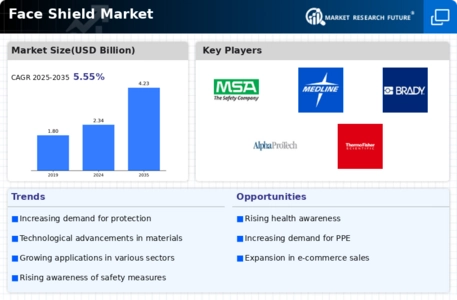
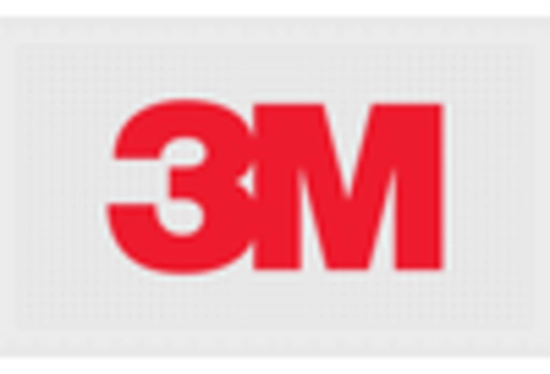
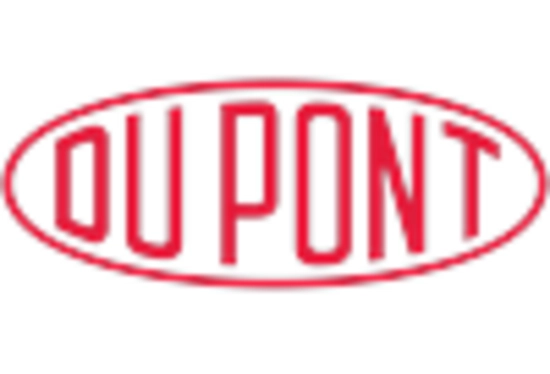

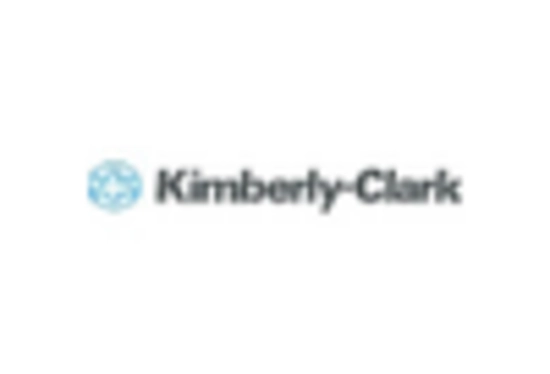
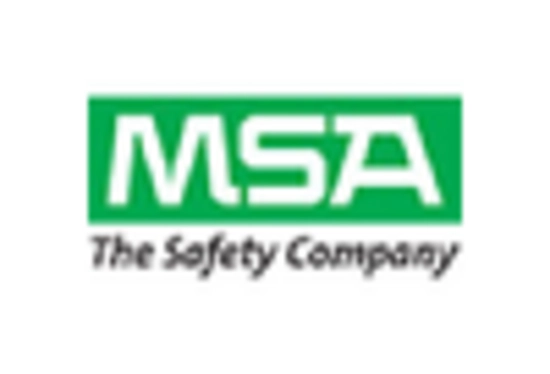
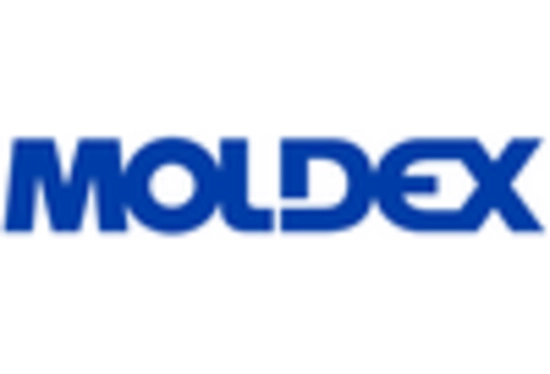

Leave a Comment